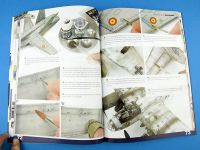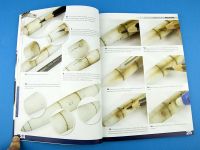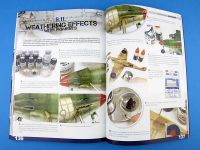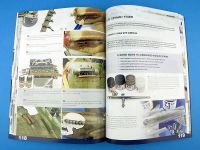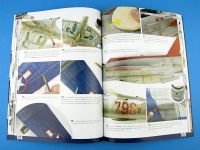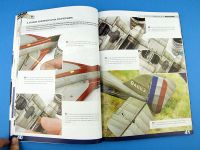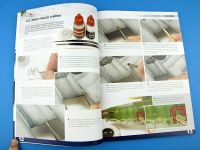AMMO of Mig Jimenez | Encyclopedia of Aircraft Modelling Techniques Volume 4: Weathering
Reviewed by Kevin Futter
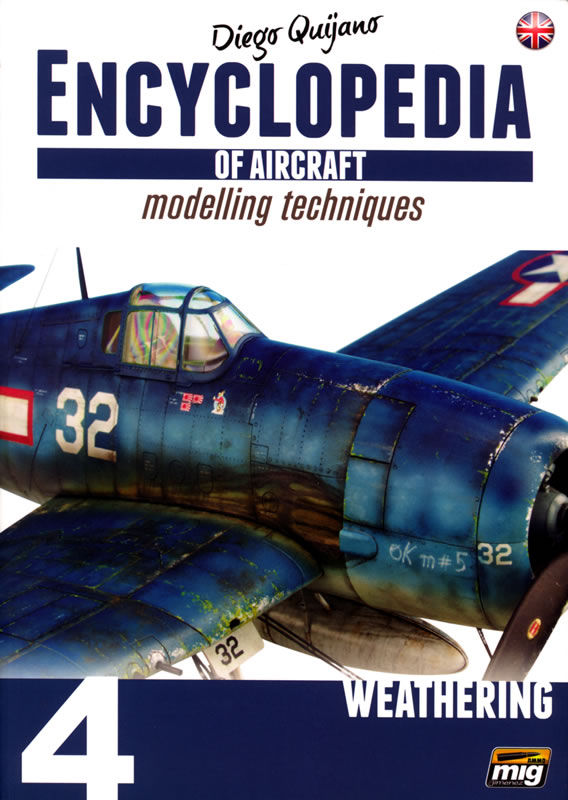
Spanish firm AMMO of Mig Jimenez specialises in finishing products for scale models, and also publishes The Weathering Magazine. The company's publishing endeavours have now been expanded with the release of Volume 4 in an ambitious series entitled Encyclopedia of Aircraft Modelling Techniques. The series is authored by well-known Spanish modeller Diego Quijano, with five volumes planned in all. Volume 4 focusses on weathering.
This title weighs in at 159 pages, and despite its Spanish provenance, the text is in English throughout (it's also available in Spanish). While the number of typos and expression errors continues to improve compared with the earlier volumes, there are still a few minor ones present. Nevertheless, I'm pleased to see improvements in these areas, and I encountered nothing that would interfere with comprehension of the material.
Unlike previous volumes, this one is comprised of a single 'chapter', which is presented in 13 magazine-style photo-essays (note that the section numbering continues from Vol. 3):
- 6.1 Preparation
- 6.2 Chipping
- 6.3 Filters
- 6.4 Dirt, Grime and Worn Paint
- 6.5 Panel Line and Surface Detail Washes
- 6.6 General Washes
- 6.7 Streaking Effects
- 6.8 Spill Stains
- 6.9 Exhaust Stains
- 6.10 Graphite Effects
- 6.11 Weathering Effects with Pigments
- 6.12 Effects with Color Pencils
- 6.13 Extreme Weathering and Fading
In my reviews of the first three volumes (Vol. 1, Vol. 2, Vol. 3), I gave a brief description of each section. That approach isn't really practical with this volume, however, as there are many more sections to cover, and a substantial amount of overlap between them. Instead, I'll provide a more general impression of the contents, with discussion of particular elements where they're noteworthy.
The weathering of scale models is a highly-subjective area of the hobby, and when it comes to aircraft, it can also be highly contentious. One of the more extreme and stylised approaches has come to be known as The Spanish School, and given the Spanish provenance of both publisher and author, it's no surprise that this book uses that approach. A brief passage in the author's foreword acts as both explanation and disclaimer:
This is a book about weathering effects, so the models presented are by sheer necessity quite heavily weathered and faded. For those among you who like extremely weathered models, but are afraid to do it because you don't know how to create these effects: this is your book. On the other hand: if you prefer a subtler approach, this book will offer you a wide range of techniques and effects to choose from, simply adjust their amount and intensity to your taste. Finally, for those who want their models in a new, mint conditions, I honestly recommend to stop reading right here, because in this book we're going to get them really dirty. You have been warned.
Warned, indeed - and rightly so, for the book certainly lives up to its promise. All the models are heavily (and in some cases, extremely) weathered, and if that isn't your cup-of-tea, then, as the author suggests, this book is not for you.
And while I don't personally subscribe to the so-called Spanish School, I also prefer to take a more positive approach to the material presented, and learn what I can from it. If we take the issue of style out of the discussion, then there is a large number of hints, tips, and techniques on offer in these pages, and the results you can achieve are merely a product of the extent of their application. In other words, use them in moderation for more restrained results.
And it's in the sheer number and variety of techniques discussed that this book really hits the mark, elucidating everything from enamel and oil washes, to weathering effects with graphite and coloured pencils. There's an excellent section on creating exhaust stains, and an even more valuable one about replicating worn or heat-stained exhaust pipes. Many of the techniques discussed seem like they belong more in the world of AFV modelling, but still have uses for producing heavily weathered aircraft models.
The one minor criticism I would level at the book is that it almost exclusively utilises AMMO of Mig products. Being a house publication, this is perhaps unavoidable, but it does read at times more like an extended advertorial than a technique book. Still, substituting a recommended product with something similar from your own toolkit should be pretty straightforward. And if you don't have such products at your disposal, then the AMMO of Mig offerings will be as good a place as any to start.
Sample Pages
Below is a random selection of pages from the book, to give you a feel for the content and presentation.
The quality of the photos is uniformly excellent, and the captions and explanations are largely clear and easy to follow. Some of the techniques described will take some practice to master, especially if the aim is a more restrained result, but that's true of a great many things in modelling, and indeed, in life itself.
Conclusion
This series is an ambitious undertaking, and Volume 4 is probably the most subjective of the series so far. Weathering scale model aircraft is subject to personal tastes and preferences in a way that their construction is not. This volume has a heavy emphasis on the type of paint effects that have come to be known as the Spanish School - unsurprising given the Spanish origins of both author and publisher. And while I found these stylised effects overdone in places, and not to my tastes at all, this in no way detracts from the usefulness of the information conveyed, or the validity of the approaches themselves. Most of what is presented here is eminently adaptable to a wide variety of tastes and approaches. There are hints and tips aplenty, and something to learn or be inspired by, no matter your current level of modelling skills. For someone like me who's still trying to master the mysterious art of weathering, there's plenty in this volume to recommend it.
Thanks to AMMO of Mig Jimenez for the review sample.
© Kevin Futter 2016
This review was published on Wednesday, May 25 2016; Last modified on Wednesday, May 25 2016

